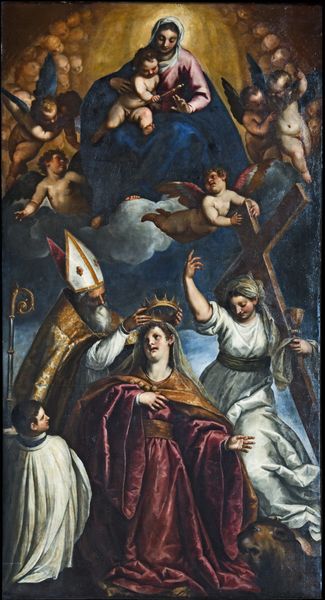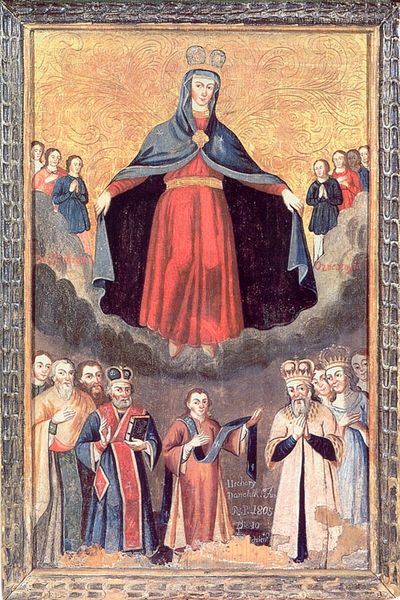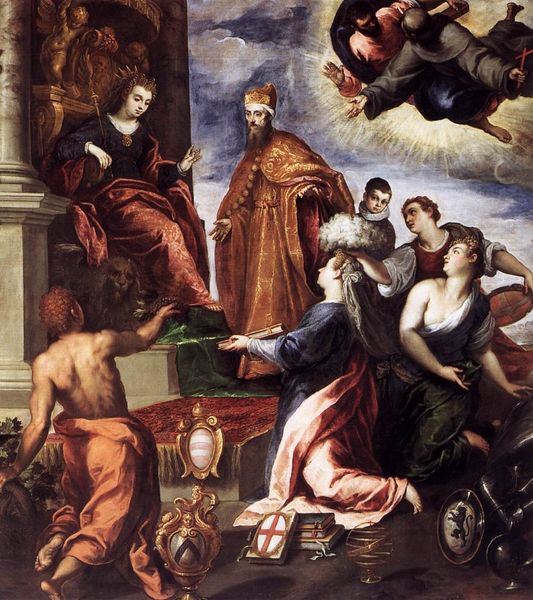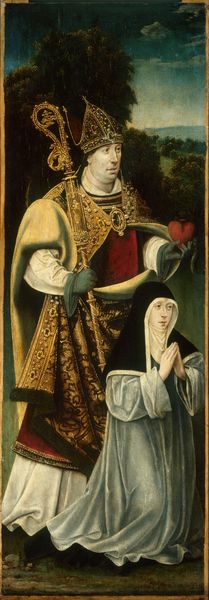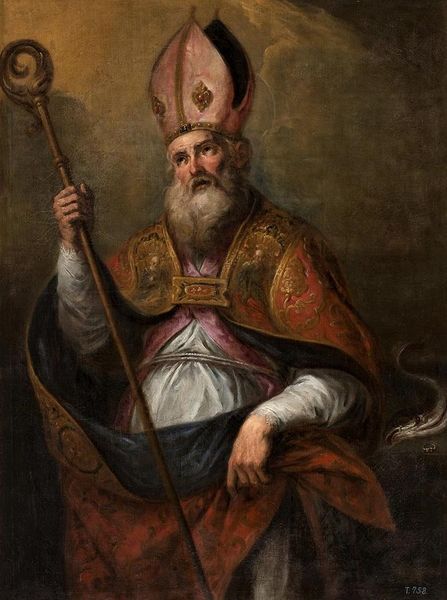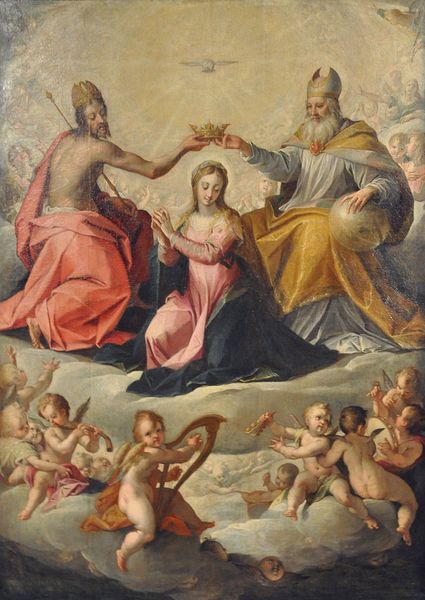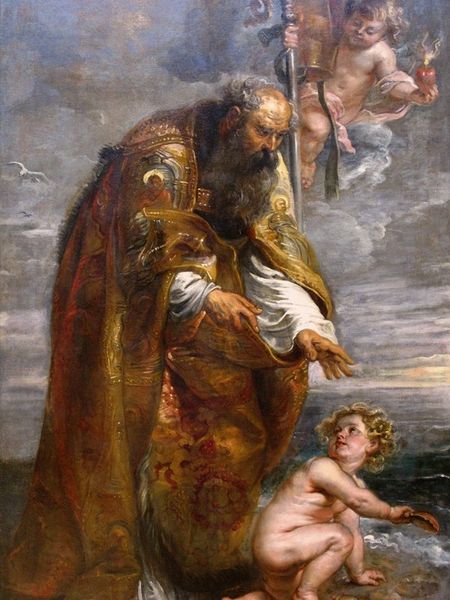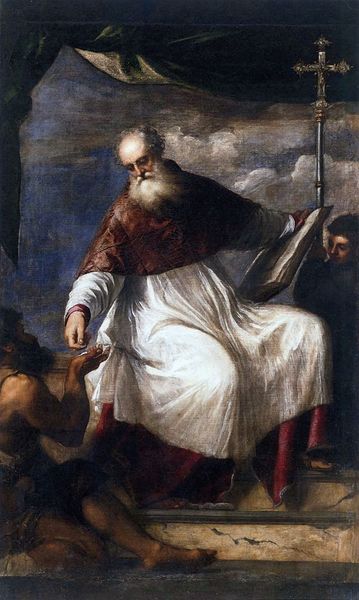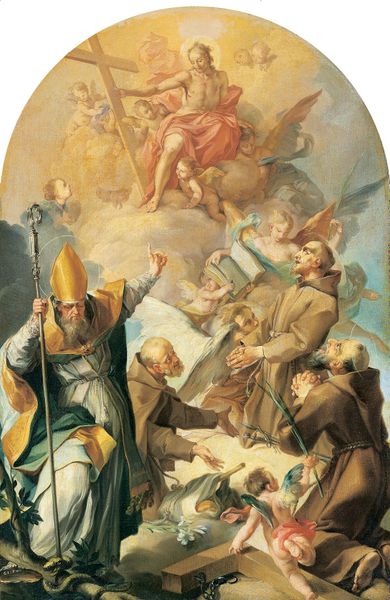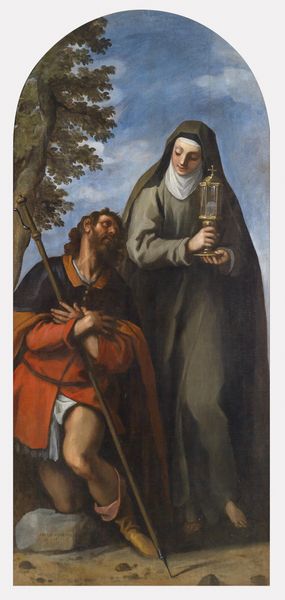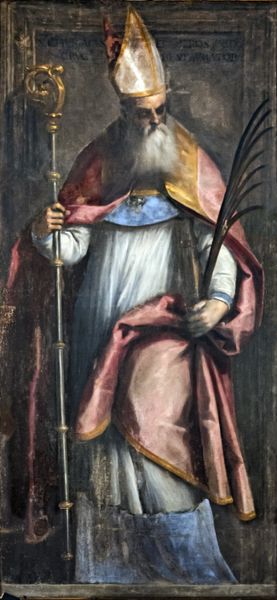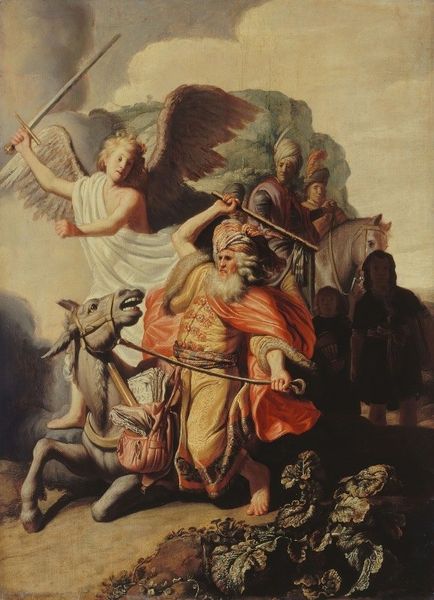
Apparition of the Virgin and Child to Saint Ubald of Gubbio, Who Points to the City of Pesaro 1620
0:00
0:00
painting, oil-paint
#
portrait
#
venetian-painting
#
baroque
#
painting
#
oil-paint
#
oil painting
#
group-portraits
#
history-painting
#
portrait art
Copyright: Public domain
Editor: Here we have Palma il Giovane’s "Apparition of the Virgin and Child to Saint Ubald of Gubbio, Who Points to the City of Pesaro," created around 1620 using oil paint. It has this vertical composition, split between the earthly and heavenly realms. What narratives do you see at play here? Curator: It's crucial to understand this work through the lens of patronage and civic identity in the 17th century. The depiction of Saint Ubald interceding for Pesaro places the city and its inhabitants under divine protection, but also asserts a very specific power dynamic. The very act of commissioning such a piece served as a form of social and political capital. Can we ignore, then, how the Church appropriates faith and spirituality? Editor: So, you're saying it is both about genuine belief and a display of power? Curator: Exactly. Note how Saint Ubald’s gesture directs us not just towards the Virgin but also to the idealized city. We need to question whose voices are amplified in this historical moment. Consider the lack of female agency. Mary is placed in the upper section, silent and observing. What limitations and expectations were placed upon women? It encourages us to view history from multiple perspectives. Editor: I never thought about how the positioning reinforced the existing power structures. Curator: Religious art frequently performs this function. Moreover, observe the idealized figures – they conform to beauty standards which have deep roots in culture, reinforcing hierarchies. It asks: Whose experiences are considered ‘universal’ and why? How might a disabled person, a person of color, interpret these divine figures who embody very specific, limiting ideals? Editor: This reframing really brings a whole new dimension to how I view not just this painting, but religious art in general. Curator: Exactly. By interrogating the underlying social dynamics encoded in this seemingly straightforward religious scene, we actively engage with art's power. That critical lens provides vital understanding.
Comments
No comments
Be the first to comment and join the conversation on the ultimate creative platform.
